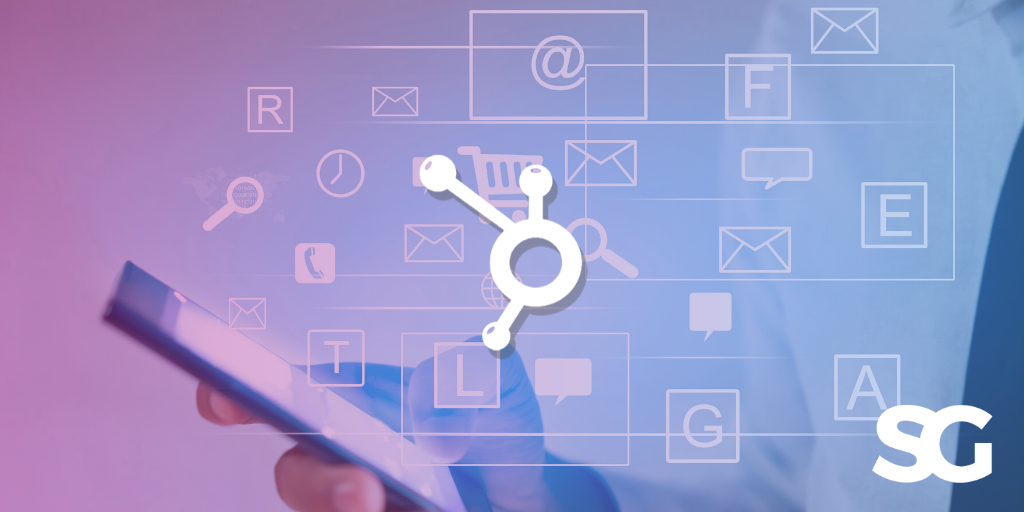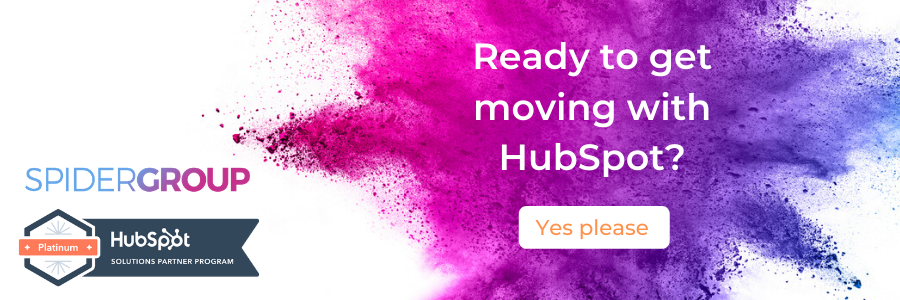Understanding your customers is the key to building a successful eCommerce business. It’s crucial that you understand why they buy what they buy and what you can do to motivate their buying behaviour.
In order to understand your customers you need to gather their individual data. From their first visit, purchases, and even any complaints, all of these are essential in understanding them. Once you have started to understand their behaviour, you can create an effective marketing strategy that connects with them.
But in an online landscape, it would be difficult – if not impossible – to track your individual customers’ behaviour manually.
If you’re looking for a way to streamline your eCommerce requirements, there’s software options that’ll have your back. HubSpot is adept at handling all aspects of your eCommerce marketing for you. The all-inclusive digital marketing tool can help you automatically keep track of customer data individually. They then translate the bulk of that data into understandable metrics that you can put into action.
However, gathering data is simply the first step towards eCommerce success. You then need to craft marketing strategies and campaigns that effectively use said data.
Read on to jumpstart your eCommerce marketing with HubSpot. Or jump in to look at some of our marketing tips for eCommerce.
Integration
First, you need to integrate your eCommerce platform with your HubSpot CRM. This enables HubSpot to keep track of the information and data gathered by your online store hosted by an eCommerce platform.
HubSpot has integration with Shopify. For all others, HubSpot offers a wide range of integration with their HubSpot eComm Bridge. Not only that, it also allows you to connect additional stores to a single HubSpot account, depending on your plan.
Integrating your eCommerce to HubSpot provides a convenient way to access your data without going back and forth between the different platforms. Additionally, available data can be accessed whenever it is necessary to create marketing campaigns.
Target customers based on abandoned carts
The majority of online shoppers place items in their cart but fail to check out or finish their purchase, which may be due to several reasons. HubSpot can track the items left in your customer’s cart. Then, you can choose a strategy to make use of this data by sending out, for example, abandoned cart emails.
You can send out an abandoned cart email to those who were interested with the item and remind them to finish their purchase. Sending out these types of emails makes your customers more valued. This appears like a personalised approach to remind them of their initial consideration, even if you’re only rallying their indecisiveness to complete the sale. Plus, a direct link to your checkout process makes the purchase much easier for them.
Motivate customers more by sending out free coupons, discounts, or other offers that may further influence their decision.
Target based on last purchase
Once you have integrated HubSpot with your eCommerce platform, you’ll get data based on specific customer’s activities. For example, you’ll know what your customer’s average purchase amount is and the average time between their purchases.
Items they purchased last indicate other things you can offer them. Customers who buy work out supplements might consider purchasing homework out equipment as well. Cross-selling other products can be effective once you know which kind of products customers have already bought and which ones can complement it.
The pattern in your customer’s behaviour can be used as a marketing campaign. Customers that routinely purchase a product can be segmented depending on their purchase cycle. If, for example, some customers haven’t purchased in a within a given time period, you can send out an email offering the product they routinely purchase. Have a look at how to make the most out of HubSpot workflows.
Tag assets for campaign assessment
Assets, like CTAs in your emails or links to landing pages, are always associated with your campaigns. That is why it is necessary to keep track of their performance, to understand if they have a positive digital marketing ROI. With HubSpot, you can keep track of your assets by tagging them.
Once you’ve tagged your assets, you can see which types of campaigns they work best for your collective marketing efforts. This way, you can mix up and experiment with your assets and campaigns.
Lead scoring
One of HubSpot’s most coveted features is their lead scoring.
HubSpot’s predictive lead scoring helps your business create in-depth profiles of your customers and create a pipeline for their actions. Lead scoring goes beyond demographics and dives deep into actual user behaviour.
This works by letting you assign values to leads coming in and add up ‘points’ depending on their actions. Opening emails, adding items to their cart, revisiting a product page multiple times, etc., can indicate that the lead is getting warmer. While opting to unsubscribe from your email or long inactivity periods suggest the lead is no longer interested in your product.
Lead scoring helps your business understand those who are just window shopping, and recognise those ready to buy immediately. With this, you can create super-targeted and personalised campaigns which relates to your leads in every stage of their journey.
HubSpot’s Smart List
Another invaluable feature of HubSpot is their Smart List. These can be based on several criteria for your leads that you can choose. Once your customers meet a certain criteria, your smart list is automatically updated.
This is invaluable to grow your customer’s lifetime value and strengthen your lifecycle marketing. For example, a smart list can be populated by customers that are only buying accessories for a certain product, but not the product itself. You can then aggressively market the actual product to the ‘accessories only’ smart list. On the other hand, you can also market accessories to customers who have brought the standalone product only.
Universal inbox
Communication between your business and your customers should remain seamless all the time. They expect a response regardless of the channel they used to reach you, be it live chat, social media, email, and phone calls.
HubSpot’s universal inbox keeps all your conversations in one place for convenience, so that none of your customers queries falls through the cracks.
Their live chat feature allows you to automatically connect with your visitors and route them to your service teams or pass that lead to a sales representative assigned. Additionally, every conversation is saved and stored into your contact’s timeline. So regardless of the team member assigned, they’ll have crystal clear context of what your customer wants.
Chatbots
Even while window shopping, customers would like connect for clarifications regarding your products. While your customer support can ensure that they will get back to them, it can’t be guaranteed that it’s instantaneous. For online shoppers, an immediate answer to their question can be the deciding factor to go through with the sale.
HubSpot’s Chatbot builder can equip your product’s landing pages with those answers. Based on the product and the landing page, you can create automated messages for the visitors. This helps you automatically book meetings, qualify leads, and provide answers to common questions, without compromising your customer support team—so they can focus on other important conversations.


